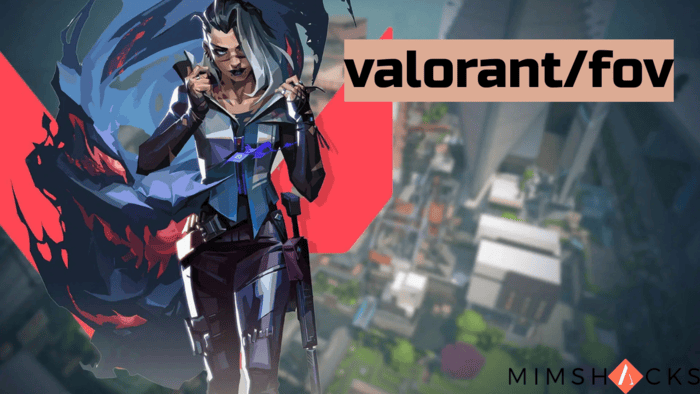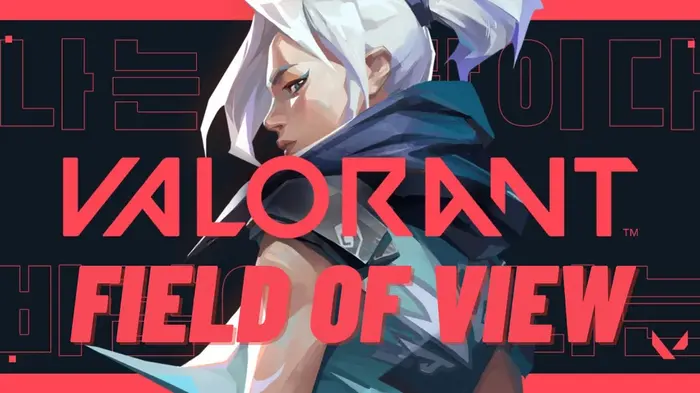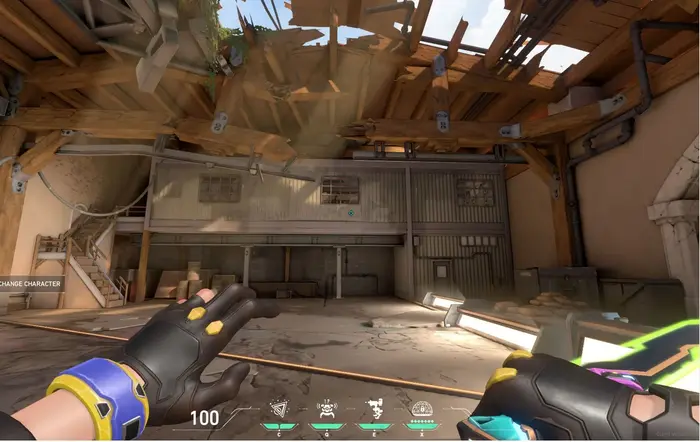What Is FOV in Valorant and How to Set It?
FOV (Field of View) in Valorant defines the area of the game world that is visible to the player at any given time.
Greetings, agents! Welcome to GameTree’s in-depth Field of View (FOV) guide in Valorant.
Understanding how FOV affects your gameplay can give you a competitive advantage, especially in crucial situations.
Let’s explore what FOV is, how it functions in Valorant, how to adjust it, and what settings professional players prefer.

FOV in Valorant: How It Affects Gameplay
In Valorant, Field of View (FOV) defines how much of the game environment is visible on your screen at any given time.
A broader FOV lets you observe more of the surroundings, which can be important for detecting enemies and moving around the map efficiently.
On the other hand, a smaller FOV narrows your focus, which may improve accuracy but reduce your ability to notice things at the edges of your view.
How FOV Functions in Valorant?
Valorant sets the FOV to a fixed 103 degrees, preventing any adjustments within the game.
Standardizing the visual experience across players, the perception of the FOV can vary based on your monitor’s resolution and aspect ratio settings.
Note:
You can’t alter the FOV directly in Valorant, but modifying your resolution and aspect ratio will impact how you perceive the game’s visuals.
How Field of View (FOV) Affects Gameplay
The field of view (FOV) significantly shapes your in-game experience:
- Awareness of Surroundings: A broader FOV lets you observe more of your environment and spot opponents approaching from various directions.
- Target Visibility: A narrower FOV makes opponents appear larger, which can enhance your aim.
- Impact on Performance: Adjusting your screen resolution changes the perceived FOV and affects game performance. Lower resolutions increase frame rates but reduce visual clarity.
Tip:
Experiment with different settings to find a balance between awareness and accuracy that works for you.

How to Adjust the field of view (FOV)?
Although the game doesn’t provide a direct method to modify FOV, adjust your screen settings to change the perceived FOV:
- Using Graphics Control Panel:
- Right-click on your desktop and open the graphics control panel.
- Navigate to display settings and adjust the screen size.
- Select an aspect ratio setting, like 4:3.
- Apply the changes and launch the game.
Reducing the horizontal FOV to around 71 degrees creates a zoomed-in effect. Adjusting the settings may cause borders to appear on the sides of the screen or distort the image based on scaling options.
- Adjusting Game Resolution:
- Open the game’s settings menu.
- Go to the display settings.
- Select a lower resolution with a 4:3 aspect ratio, such as 1280×960.
- Apply the changes.
Changing the resolution affects the perceived FOV and may alter the game’s visual quality.
Display Settings Used by Expert Gamers
Top players adjust their display settings to enhance performance and improve their gaming experience. Some standard display options include:
- Full HD (16:9): Many players prefer a familiar setting that provides a balanced perspective and enhances visual clarity.
- Stretched View (4:3): A setting that expands the width of character models, potentially making it easier to target.
- Lower Resolution (4:3): A setting that boosts frame rates on less powerful systems, but reduces visual quality.
Note:
These choices depend on individual preferences, so select a setting with the best performance and comfort.
Other Related Concepts

- Ratio: The screen shows content based on the ratio of its width to its height.
- Display Quality: The number of pixels shown on the screen, usually expressed as width × height (e.g., 1920×1080). Higher quality gives sharper images.
- Refresh Rate: The frequency with which the display updates per second, measured in Hertz (Hz). Higher rates lead to smoother visuals.
- Responsiveness: The speed at which your input device reacts, affecting how quickly your aim or movements adjust.
- Aim Positioning: Position your on-screen indicator to minimize the time required to target an opponent.
- Input Delay: The lag between your action and its response in the game. Lower delay creates more responsive gameplay.
Improving your display settings and related options can significantly elevate your gaming performance.
Try different configurations to find what works best for you, and check out our broad gaming glossary for more guidance.
Stay focused, and good luck in the game!





